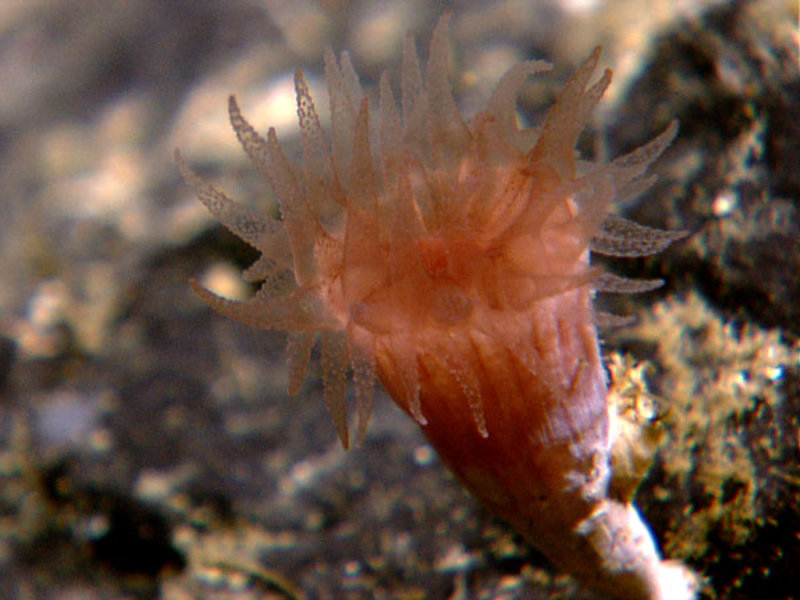
An example of macrofauna – a small cup coral about 2cm in height with its tentacles extended. Image courtesy of the NOAA Office of Ocean Exploration and Research, INDEX-SATAL 2010. Download larger version (jpg, 1.7 MB).

An example of macrofauna – a small cup coral about 2cm in height with its tentacles extended. Image courtesy of the NOAA Office of Ocean Exploration and Research, INDEX-SATAL 2010. Download larger version (jpg, 1.7 MB).
Dive number 8 of Leg 3 took place on a site termed “Eastern Pujada Ridge”. The dive started along the base of the slope at a depth of approximately 900m. The substrate was mostly fragmented pieces of basalt but very little sessile megafauna (animals that you can see with your bare eyes) was observed except for a few glass sponges. A closer look at the rocks revealed a high abundance of macrofauna dominated by white hydrocorals and some cup corals. As we progressed upslope to the west in a zig-zag movement we started to see increasing abundances of gorgonians, especially golden corals and their associate squat lobsters. Other less common corals included whip corals, soft corals and few bamboo corals. There was a noticeable lack of sea lilies in this area. The current at this point had a heading of 178.4 degrees and a speed of 0.6 knots. We started moving west and encountered a very large field of small white stalked barnacles. They did not appear to form aggregations but were present on about 90% of the rocks. No evidence of chemosynthesis was observed. Few other fauna were observed at this place aside from sea urchins and a few black corals. The current here was very strong at 0.99 knots with a heading of 189.5 degrees.